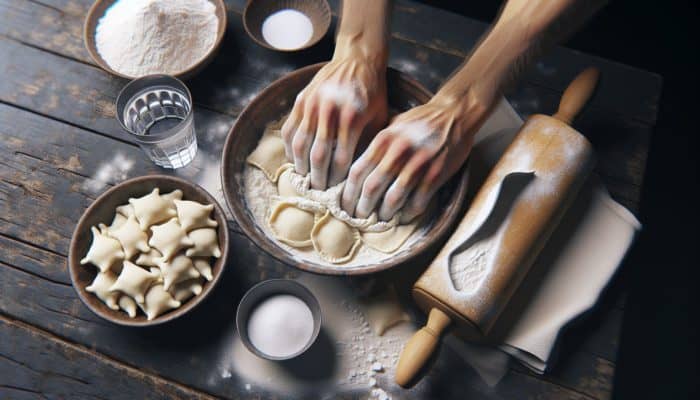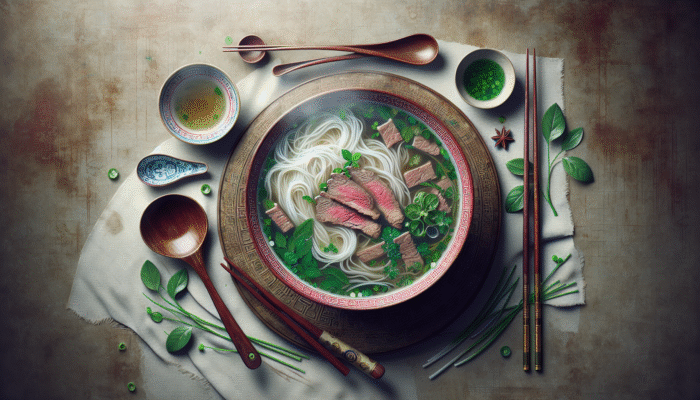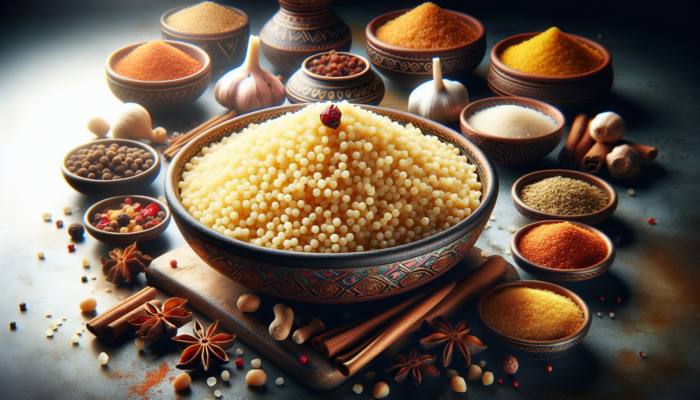Unveil the Essential Ingredients for Authentic Thai Green Curry Mastery
Discover the Key Components That Make Thai Green Curry Irresistibly Flavorful
The magic of Thai green curry stems from its vibrant and aromatic ingredients, crafting a culinary journey that is both memorable and satisfying. At the core of this delightful dish is a perfect blend of lemongrass, galangal, Kaffir lime leaves, and Thai green chilies. These fundamental ingredients contribute not only to a rich and complex flavor profile but also impart the distinctive aroma that Thai cuisine is celebrated for around the globe. Choosing fresh, high-quality ingredients is essential; sourcing these will dramatically enhance the flavor and authenticity of your curry. The perfect balance of these crucial elements yields a profile that is a delightful medley of salty, sweet, sour, and spicy, showcasing the artistry inherent in traditional Thai cooking.
Investing time to familiarize yourself with these ingredients can significantly enhance your culinary experience at home. Lemongrass contributes a refreshing citrusy essence, while galangal adds a unique peppery brightness. The fragrant, floral notes of Kaffir lime leaves beautifully complement the heat from green chilies. Together, these elements create a flavor foundation that is intricate and utterly irresistible, ensuring that every bite transports you to the vibrant culinary landscape of Thailand.
Explore a Variety of Protein Selections to Elevate Your Thai Green Curry
Selecting the right protein for your Thai green curry is a journey filled with options, each contributing unique textures and flavors that can elevate your dish to new culinary heights. Common protein choices include:
- Chicken: Opt for boneless thigh or breast for tenderness; marinating briefly in soy sauce can deepen the flavor profile.
- Shrimp: Choose large, fresh shrimp; adding them towards the end of cooking prevents overcooking and maintains their natural sweetness.
- Beef: Choose tender cuts such as sirloin; slicing thinly against the grain ensures optimal tenderness.
- Tofu: Firm tofu is ideal; pressing it to remove excess moisture allows you to achieve a beautiful golden sear.
Each protein selection effectively absorbs the robust and spicy flavors of the curry, making proper preparation essential. For example, marinating chicken enhances its juiciness, while briefly precooking shrimp ensures they maintain their delightful sweetness. Your choice of protein not only influences the taste but also contributes to the overall texture of your dish, creating a personalized culinary experience that caters to a variety of palates and preferences.
Enhance Your Thai Green Curry with Colorful Vegetables and Fresh Aromatic Herbs
Elevating your Thai green curry with a thoughtful selection of vegetables and herbs not only enhances its nutritional profile but also adds vibrant color and excitement to the dish. Traditional ingredients often include Thai eggplant, bamboo shoots, and an array of fresh herbs such as basil and coriander. These components not only enrich the flavor but also provide a satisfying crunch and refreshing quality that beautifully balances the creaminess of coconut milk, making each bite an enjoyable culinary experience.
Incorporating bright vegetables like bell peppers, snow peas, or even zucchini can further enhance both the visual appeal and nutritional benefits of your curry. Fresh herbs such as Thai basil and coriander impart an aromatic finish that elevates the overall dining experience. An exemplary Thai green curry showcases a variety of textures and flavors, ensuring that every mouthful is an exhilarating adventure filled with lively tastes and enticing aromas.
Master Essential Preparation Techniques for Authentic Thai Green Curry

How to Create Authentic Curry Paste in Your Own Kitchen?
Crafting the perfect Thai green curry paste is a pivotal step that lays the foundation for your dish. To make it at home, blend fresh ingredients until they reach a smooth consistency by following these simple steps:
- Gather fresh lemongrass, galangal, and green chilies.
- Chop them into smaller pieces to facilitate easier blending.
- Add garlic and shallots to enhance the depth of flavor.
- Incorporate a pinch of salt to aid in the grinding process.
- Blend until you achieve a smooth paste; adjust with water if necessary for consistency.
The experience of creating curry paste from scratch offers a rewarding and aromatic adventure that pre-packaged alternatives cannot replicate. Utilizing a mortar and pestle traditionally amplifies the flavors by releasing essential oils, resulting in a more complex flavor profile. The outcome is a fresh and fragrant paste that promises a truly authentic Thai green curry experience, captivating your senses and enhancing your culinary repertoire.
Cooking the Curry Base to Achieve a Luxuriously Creamy Consistency
Once your curry paste is ready, the next step involves creating a rich and creamy base for your Thai green curry. Begin by heating oil in a pan over medium heat, then sauté the curry paste until it becomes aromatic. This crucial step releases the essential oils and flavors locked within the paste, infusing the oil with a delightful fragrance. After approximately one minute, pour in coconut milk to create a luxurious, creamy sauce that serves as the heart of your dish.
The coconut milk not only provides a rich, velvety consistency but also balances the heat from the green chilies. Allow the mixture to simmer gently, letting the flavors meld together beautifully. This slow cooking process is essential for permitting the coconut milk to absorb the aromatic notes of the curry paste, resulting in a dish that feels hearty and comforting while retaining its lightness and freshness.
Master the Art of Flavor Balancing in Your Thai Green Curry

Achieving a harmonious balance of flavors in your Thai green curry is essential for crafting an authentic culinary experience. Traditional Thai cuisine emphasizes the thoughtful interplay of salty, sweet, sour, and spicy elements. The secret lies in tasting and adjusting as you cook. Start with a base of fish sauce for saltiness, then add a hint of sugar to introduce sweetness. A squeeze of lime juice provides the necessary acidity that elevates the dish, creating a delightful burst of flavor.
Understanding your palate is key; some diners may prefer a spicier kick, while others might lean towards a sweeter profile. Experimenting with additional ingredients, such as tamarind paste, can introduce an unexpected twist that enhances the complexity of flavors. Remember, the goal is to craft a dish where no single flavor overpowers the others, resulting in a well-rounded, delicious curry that showcases the beauty of Thai cuisine and entices diners to savor every bite.
Gain Expert Insights for Crafting Authentic Thai Green Curry
What Distinguishes Authentic Thai Green Curry?
Authenticity in Thai green curry hinges on the utilization of fresh, high-quality ingredients and adherence to traditional cooking techniques. Genuine recipes prioritize flavor balance, layering tastes through the careful selection of spices and aromatics. Real-life examples of authentic dishes, such as those served at local street markets in Bangkok or family-run eateries in Chiang Mai, underscore the importance of these culinary principles.
In these environments, chefs often employ locally sourced ingredients—such as freshly harvested coconut milk and homegrown herbs—which contribute to a flavor depth that is difficult to replicate with store-bought substitutes. The focus on fresh produce not only enhances taste but also reflects the cultural significance of quality food in Thai society. Understanding these subtleties is vital for anyone aspiring to recreate a genuine taste of Thailand in their own kitchen, allowing for a full appreciation of the artistry found in Thai cooking.
What Techniques Do Renowned Thai Chefs Recommend for an Authentic Experience?
Accomplished Thai chefs possess a wealth of knowledge that can substantially enhance your cooking skills when preparing Thai green curry. One prevalent technique is mastering the texture of the curry. This can be achieved by paying careful attention to how you sauté the curry paste, ensuring it is neither burnt nor undercooked, as this can drastically influence the final flavor and aroma.
Moreover, the timing of ingredient additions is critical. For instance, proteins like chicken or tofu should be introduced after the paste has been sautéed and the coconut milk has been added, allowing them to absorb the flavors fully without overcooking. Many chefs also suggest adding vegetables in stages to maintain their unique textures, especially when using a variety of produce. Adhering to these expert techniques can elevate your culinary skills and result in an authentic, satisfying dish that reflects the true essence of Thai cuisine.
Avoiding Common Mistakes When Preparing Authentic Curry
Steering clear of common pitfalls is essential for creating an authentic Thai green curry that truly shines. One of the most significant missteps is overcooking the curry, which can lead to a loss of vital flavors and nutrients. To prevent this, carefully monitor cooking times and adjust heat levels as needed to maintain a perfect simmer.
Using pre-made curry pastes can also undermine your dish’s authenticity; homemade paste captures the essence of fresh ingredients and offers unmatched flavor. Lastly, avoid skimping on herbs and aromatics, as they are the heart of the curry. Instead, prioritize sourcing fresh ingredients and focus on flavor balance throughout the cooking process. By being mindful of these common errors, you can ensure a more authentic and delightful dining experience that celebrates the deliciousness of Thai green curry.
What Ingredients Should You Prioritize for Genuine Thai Green Curry?
Choosing the right ingredients is crucial when preparing an authentic Thai green curry. Fresh herbs like Thai basil and coriander are essential; their vibrant flavors are integral in achieving the desired taste and aromatic quality. When selecting coconut milk, look for brands that contain no additives or preservatives—opting for pure coconut milk will yield superior results in terms of texture and flavor.
The type of green chilies you use can significantly influence the heat level of your curry. Traditional Thai bird chilies are the preferred choice, but if they are unavailable, consider using other fresh green chilies, adjusting the quantity to accommodate your heat tolerance. Whenever possible, source your ingredients from local markets or specialty Asian grocers to ensure freshness and quality. This dedication to high-quality ingredients will greatly enhance the authenticity and overall flavor profile of your curry, making it a standout dish in your culinary repertoire.
Serve and Present Your Thai Green Curry with Elegance
Traditional Accompaniments That Enhance Your Thai Green Curry Experience
Thai green curry is typically served alongside jasmine rice, which pairs perfectly with the rich, creamy flavors of the dish. The rice acts as a neutral base, allowing the bold flavors of the curry to shine without overwhelming the palate. To serve, spoon the curry over a generous bed of fluffy jasmine rice, ensuring that each plate features a substantial portion of both, creating a delightful balance that enriches the dining experience.
In some regions, sticky rice is also a favored alternative, offering a unique texture that complements creamy dishes beautifully. Consider adding a side of Thai cucumber salad or spring rolls for a refreshing contrast that perfectly balances the meal. These accompaniments not only enhance the overall dining experience but also add a cultural touch, showcasing the delightful diversity of Thai cuisine and its culinary traditions.
Innovative Garnishing Techniques for Stunning Presentation
Garnishing your Thai green curry is essential for elevating both its visual appeal and flavor profile. Fresh herbs such as Thai basil and coriander not only impart a burst of color but also enhance the aroma and taste of the dish. Finely chop the herbs and sprinkle them generously over the curry just before serving, ensuring that their vibrant flavors are preserved and contribute to the culinary experience.
Incorporating edible flowers can also create an eye-catching presentation. For instance, nasturtiums or Thai basil flowers can add an unexpected yet delightful touch. Consider using slices of lime or lemon as a garnish to highlight the citrus notes in the curry. By being creative with your garnishing techniques, you can transform a simple dish into a beautifully presented culinary centerpiece that impresses guests and enhances the overall dining experience.
How Can You Enhance the Dining Experience with Thai Green Curry?
Elevating your Thai green curry meal involves more than just focusing on the food itself. Serving the dish in traditional Thai bowls adds an authentic touch that enhances the overall dining experience. Consider incorporating decorative elements like edible flowers or leafy greens to elevate the presentation and appeal of the dish.
Creating a thematic dining atmosphere can further enhance the meal. Utilize traditional Thai textiles for table settings and consider lighting scented candles or playing soft Thai music to accentuate the cultural experience. These thoughtful touches can transform a simple dinner into an immersive culinary journey, allowing diners to fully appreciate the flavors and heritage of Thai cuisine, making every meal an unforgettable occasion.
- Utilize traditional Thai bowls for serving.
- Incorporate fresh herbs for garnish to enhance presentation.
- Consider edible flowers for additional visual appeal.
- Light scented candles to enhance the dining atmosphere and create a warm ambiance.
Creative Plating Styles to Impress Your Guests
The visual allure of your Thai green curry can significantly enhance the dining experience for your guests. Exploring different plating styles can create an inviting presentation that captures attention. One effective technique is to arrange the curry in concentric circles on the plate, allowing the vibrant colors of the ingredients to stand out and create an artistic display.
Another option is to create artistic drizzles of the curry sauce around the plate, using a spoon or squeeze bottle for precision. This not only showcases your culinary skills but also adds an element of artistry to the dish. Incorporating a variety of textures—such as crispy fried shallots or toasted coconut flakes—can further enhance the visual and sensory experience, making the dish not only delicious but also stunning to behold, ensuring it is as pleasing to the eye as it is to the palate.
Discover the Nutritional Benefits of Thai Green Curry
Explore the Health Advantages of Key Ingredients in Thai Green Curry
The ingredients in Thai green curry serve purposes beyond flavor; many provide significant health benefits. For example, lemongrass is renowned for its anti-inflammatory properties and aids in digestion, while galangal is loaded with antioxidants that promote overall health. The coconut milk utilized in the curry supplies healthy fats, beneficial for heart health when consumed in moderation, making the dish not only delicious but also a nourishing choice.
Incorporating a variety of vegetables into your curry—such as Thai eggplant, bamboo shoots, and fresh herbs—enhances its nutritional profile by providing essential vitamins and minerals. This makes Thai green curry not only a delightful meal but also a wholesome option that supports a balanced diet, allowing you to savor a flavorful dish while effectively nourishing your body.
What Nutritional Values Can You Expect from Thai Green Curry?
Thai green curry can be a nutritious meal option, offering a variety of nutrients from its core ingredients. A typical serving provides a good balance of protein, carbohydrates, and healthy fats, making it a well-rounded dish that satisfies hunger and supports energy levels. The addition of various vegetables contributes dietary fiber, vitamins, and minerals, while the protein from chicken, shrimp, or tofu enhances the nutritional density of the meal.
Expert analysis indicates that a serving of Thai green curry can fulfill a substantial portion of daily nutritional needs, particularly when paired with jasmine rice. Monitoring portion sizes and ingredient choices can help create a healthy meal that supports overall wellness while delighting the palate, allowing you to enjoy a comforting dish that nourishes both body and soul.
Dietary Considerations for Enjoying Thai Green Curry
Thai green curry is a versatile dish that can be adapted to meet various dietary needs. For those following a vegetarian or vegan lifestyle, substituting meat with tofu or tempeh provides a protein-rich alternative without losing flavor. Additionally, using vegetable broth instead of chicken stock can maintain depth of flavor while keeping the dish plant-based and accessible to a wider audience.
For individuals with gluten sensitivities, ensuring that the soy sauce is gluten-free can make this dish a safe option. The adaptability of Thai green curry makes it an inclusive choice for gatherings, allowing everyone to enjoy the delightful flavors without compromising dietary restrictions. This versatility ensures that Thai green curry can be a crowd-pleasing dish that caters to diverse dietary preferences while remaining true to its authentic roots.
How to Maximize Nutritional Intake from Thai Green Curry?
Maximizing the nutritional benefits from your Thai green curry involves careful ingredient selection and cooking techniques. Opt for organic vegetables when possible, as they are often richer in nutrients and free from harmful pesticides that can impact health. Cooking vegetables just until tender, rather than overcooking them, can preserve their vitamins and minerals, making the dish both flavorful and healthful.
Incorporating a variety of colors in your vegetables can help ensure a broad range of nutrients. For instance, adding vibrant bell peppers or leafy greens can enhance both the flavor and the nutritional profile of the curry. By prioritizing these aspects, you can create a dish that not only tastes amazing but also supports your health goals, allowing you to enjoy the benefits of a well-balanced meal.
Impact of Thai Green Curry on Overall Health
Regular enjoyment of Thai green curry can contribute to long-term health benefits, thanks to its nutrient-rich ingredients. The anti-inflammatory properties of key components like lemongrass and galangal can bolster immune function and overall wellness, while healthy fats from coconut milk can promote heart health when included as part of a balanced diet.
Moreover, the inclusion of fiber-rich vegetables aids in digestion and can lead to improved gut health. As part of a balanced diet, savoring Thai green curry can provide not only a satisfying and delicious meal option but also a healthful choice that supports overall well-being. Embracing the flavors and advantages of this dish contributes to a holistic approach to nutrition, making it a worthy addition to your culinary repertoire and a celebration of the vibrant flavors of Thai cuisine.
Explore Variations and Customizations of Thai Green Curry
How Can You Personalize Thai Green Curry to Fit Your Tastes?
Customizing Thai green curry allows you to tailor the dish to your personal preferences and dietary requirements. Adjusting the spice level is a common modification; if you prefer a milder curry, reduce the number of green chilies in your paste. Conversely, for those who enjoy heat, adding extra chilies or a splash of chili oil can amplify the spice factor and create a bold flavor profile that excites the palate.
You can also swap out the protein to match seasonal availability or personal taste, using fish, pork, or even a variety of legumes for a vegetarian option. Including different vegetables, such as carrots, zucchini, or spinach, not only adds flavor but also enhances the nutritional content of the dish. This flexibility allows everyone to enjoy an authentic Thai green curry experience that caters to their tastes while ensuring that the dish remains both satisfying and delicious.
Diverse Regional Variations of Thai Green Curry to Explore
While the core ingredients of Thai green curry remain consistent, regional variations can introduce unique flavor profiles that reflect local culinary traditions. For example, in Southern Thailand, the curry might be spicier, utilizing a higher ratio of green chilies compared to the milder versions found in northern regions. Additionally, some areas may incorporate local vegetables or seafood, adding distinct regional flair that enhances the overall dish.
In certain coastal regions, fresh seafood such as squid or mussels may play a prominent role in the curry, offering a delightful twist on the classic dish. Understanding these regional nuances can deepen your appreciation for Thai cuisine, allowing you to explore diverse interpretations of Thai green curry that highlight the rich culinary heritage of Thailand and its vibrant culinary landscape.
Exciting Fusion Ideas for Thai Green Curry to Try
Incorporating non-traditional ingredients into your Thai green curry can lead to exciting fusion dishes that blend Thai flavors with other culinary traditions. For example, using quinoa instead of rice as a base provides a nutty flavor and a protein boost, making it a great option for health-conscious diners seeking a nutritious alternative.
You might also consider adding elements such as curry powder or tamarind sauce from Indian cuisine for an interesting twist that adds depth and complexity to the dish. Experimenting with Mexican ingredients, like incorporating black beans or corn, can create a unique flavor combination that brings a delightful fusion of cultures to your table. These creative adaptations can broaden the appeal of Thai green curry while maintaining its essence, allowing for innovative interpretations that delight the senses.
Research-Backed Advantages of Cooking Authentic Thai Green Curry
Enhancing Your Culinary Skills Through Time-Honored Thai Cooking Techniques
Learning to cook authentic Thai green curry not only enriches your cooking repertoire but also significantly enhances your culinary skills. Mastering this dish involves understanding the balance of spices, techniques for crafting a smooth curry paste, and the timing of ingredient additions to achieve the perfect flavor profile. These skills are highly transferable to other dishes, fostering greater confidence and expertise in the kitchen.
Engaging with the intricacies of Thai cuisine, from ingredient selection to flavor balancing, can deepen your understanding of culinary arts. The process encourages experimentation and creativity, allowing home cooks to cultivate a more sophisticated palate and cooking technique over time. Ultimately, this journey leads to a more fulfilling cooking experience that not only satisfies the appetite but also nourishes the soul.
Appreciating Thai Culture Through the Art of Cooking
Cooking Thai green curry provides a unique opportunity to engage with and appreciate Thai culture and culinary traditions. By exploring the history and significance of the ingredients and preparation techniques, you can gain insight into the cultural practices that shape Thai cuisine. This appreciation extends beyond the kitchen, fostering a connection to the rich heritage of Thailand and its diverse culinary landscape.
Participating in the culinary process allows you to embrace the values of freshness, quality, and balance that are central to Thai cooking. Sharing this dish with family and friends can further enhance your understanding of cultural diversity and foster a sense of community through shared meals. This experience promotes an appreciation for the flavors and traditions of Thailand, enriching your culinary journey and creating lasting memories.
What Psychological Benefits Can Cooking Provide for You?
Cooking can be a therapeutic activity, offering numerous psychological benefits, particularly when preparing dishes like Thai green curry. The act of cooking engages the senses, providing a creative outlet that can alleviate stress and anxiety. The rhythmic motions of chopping, stirring, and sautéing can be meditative, promoting relaxation and mindfulness as you immerse yourself in the cooking process.
Moreover, creating a delicious meal provides a sense of accomplishment and satisfaction. Enjoying the fruits of your labor—whether alone or with others—can enhance mood and foster a sense of connection. By embracing the joy of cooking, especially with a dish as vibrant and flavorful as Thai green curry, individuals can experience both emotional and mental well-being, making it a rewarding and enriching activity.
Frequently Asked Questions About Thai Green Curry
What is the primary ingredient in Thai green curry?
The primary ingredient in Thai green curry is the green curry paste, which is crafted from a blend of fresh herbs and spices, including lemongrass, galangal, and Thai green chilies.
Can I create a vegetarian version of Thai green curry?
Absolutely! You can easily prepare Thai green curry as a vegetarian dish by substituting meat with tofu or an array of vegetables and using vegetable broth instead of chicken stock for added depth of flavor.
How spicy can Thai green curry be?
The spiciness of Thai green curry can vary significantly depending on the amount of green chilies used in the paste. Adjusting the quantity allows you to tailor the heat level to your specific preference, ensuring that every bite is just right.
What type of coconut milk is recommended for cooking Thai green curry?
For optimal results, use full-fat coconut milk without additives. This provides a creamy texture and rich flavor that is essential for authentic Thai green curry, enhancing the overall experience of the dish.
What vegetables can I incorporate into Thai green curry?
Traditional vegetables include Thai eggplant and bamboo shoots, but you can also add bell peppers, zucchini, or spinach for a colorful and nutritious boost that enhances both flavor and texture.
How should I store leftover Thai green curry?
Leftover Thai green curry can be stored in an airtight container in the fridge for up to three days. Reheat gently on the stove or in the microwave before serving to enjoy the flavors once more.
Is Thai green curry a healthy meal option?
Yes, Thai green curry can be a healthy meal choice, packed with vegetables, protein, and healthy fats from coconut milk. Just be mindful of portion sizes and ingredient choices for optimal health benefits, making it a nutritious and satisfying option.
Can I freeze Thai green curry?
Yes, you can freeze Thai green curry for up to three months. Ensure it’s cooled completely before transferring to an airtight container or freezer bag for effective storage while preserving its delightful flavors.
What should I serve alongside Thai green curry?
Thai green curry is traditionally served with jasmine rice, but you can also pair it with sticky rice or a simple salad for a refreshing contrast that balances the rich flavors of the curry.
How long does it take to prepare Thai green curry?
Preparing Thai green curry typically takes about 30-45 minutes, including time for making the curry paste and cooking the ingredients to perfection, ensuring a delicious meal without excessive time commitment.
Connect with us on Facebook for more culinary inspiration!
The post How to Cook Authentic Thai Green Curry: A Universal Guide appeared first on https://cookinggods.com
The Article Authentic Thai Green Curry: Your Ultimate Cooking Guide Was Found On https://limitsofstrategy.com











